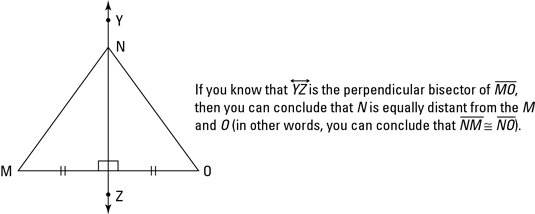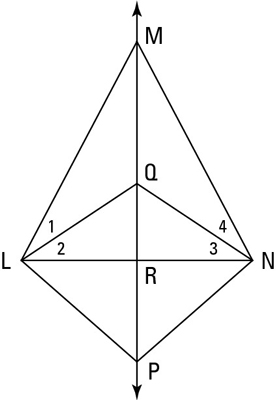You can use a point on a perpendicular bisector to prove that two segments are congruent. If the point is on the perpendicular bisector of a segment, then it’s equidistant from the endpoints of the segment. (Here’s an abbreviated version: If you have a perpendicular bisector, then there’s one pair of congruent segments.)

The above figure shows you how this equidistance theorem works.

Note that you can see the reasoning behind the short form of the theorem in the above diagram:

Here’s a proof that uses this equidistance theorem:


Statement 1:
Reason for statement 1: Given.
Statement 2:
Reason for statement 2: If sides, then angles.
Statement 3:
Reason for statement 3: Given.
Statement 4:
Reason for statement 4: If two congruent angles (angle 2 and angle 3) are added to two other congruent angles (angle 1 and angle 4), then the sums are congruent.
Statement 5:
Reason for statement 5: If angles, then sides.
Statement 6:
Reason for statement 6: If two points (M and Q) are equidistant from the endpoints of a segment (segment LN; see statements 1 and 5), then they determine the perpendicular bisector of that segment.
Statement 7:
Reason for statement 7: If a point (point P) is on the perpendicular bisector of a segment, then it is equidistant from the endpoints of that segment.

